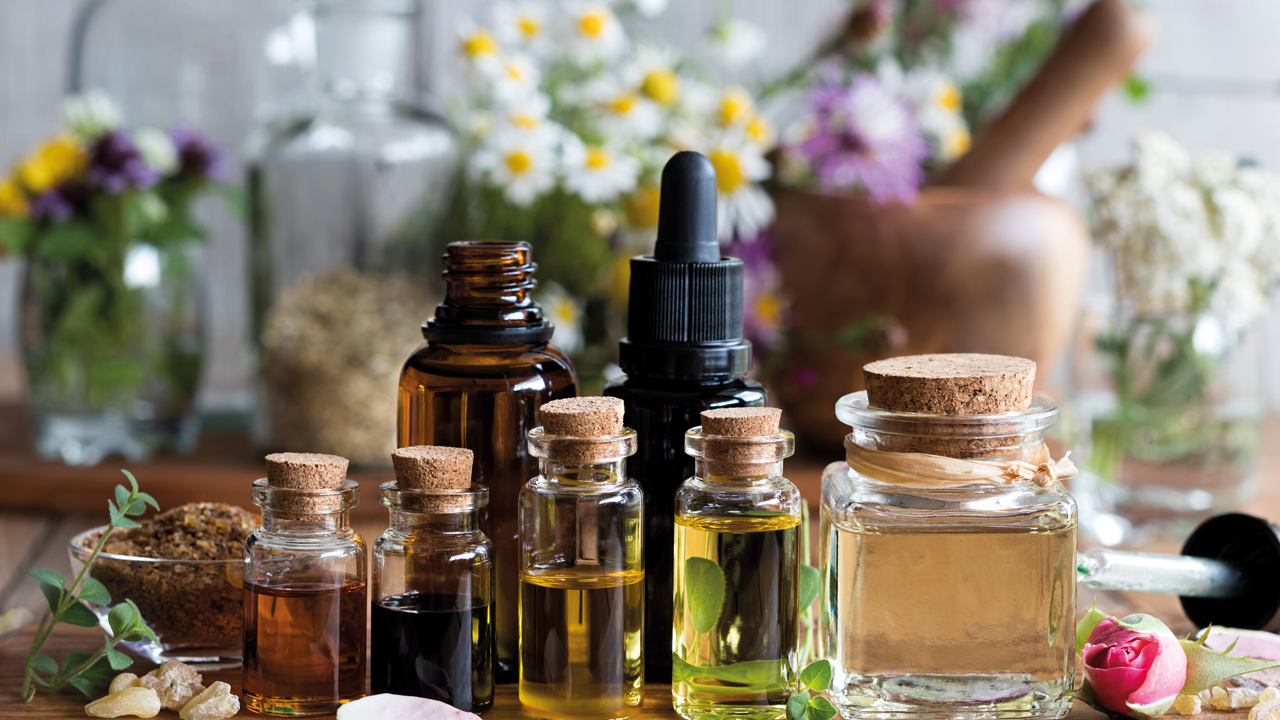In In-depth
Follow this topic
Bookmark
Record learning outcomes
From St John’s Wort for depression and low mood, to sage for menopausal hot flushes and echinacea for colds, many people turn to herbal medicines to help with self care.
Despite a market slowdown during the early part of the Covid-19 pandemic, the UK market for herbal medicines is growing once again – according to research from Market Data Forecast – thanks to increased healthcare spending and R&D advances in the sector.
Yet all herbal medicines are not the same – so how can community pharmacy staff help customers understand the differences between those which are Traditional Herbal Registration (THR) approved versus Product License (PL) registered, as well as those which are Food Supplements?
Explaining the difference
Health products that are sold on the UK consumer market can fall into one of four categories.
“Two categories, identified on their packaging with the letters PL or THR, are medicines controlled by the MHRA”, explains Dr Richard Middleton, pharmacist and director of the British Herbal Medicine Association (BHMA). “A third category, Medical Devices, identified by a CE or UKCA mark on the packaging, are also controlled by the MHRA, and a fourth category are herbal food supplements, also known as botanicals, which are controlled by the Food Standards Agency.”
PL means the product has full Marketing Authorisation and, according to nutritionist Dr Pamela Mason from the Health & Food Supplements Information Service, “must be backed by clinical evidence and can make medicinal claims – for example to prevent or treat a condition”.
THR means that the products meet standards of safety and quality but “are not supported by the clinical evidence of efficacy considered acceptable for a full Marketing Authorisation”, continues Dr Mason, with THR granted “only if the product is for a minor indication where medical supervision is not required (for example, a cold)”.
Medical Devices do not have any pharmacological action but work through “a physical mechanism of action”, says Dr Middleton, and will have “important information on the carton, and sometimes include a leaflet so that the consumer can use them safely”.
Finally, food supplements containing nutrients such as vitamins and minerals – sometimes with one or more herbal ingredients – cannot make any medicinal or traditional use claims but are regulated as foods so must be safe to be put on the market. “Health claims can be made for some food supplements – for example, calcium is needed for the maintenance of normal bones”, adds Dr Mason, “and these are set out in the Great Britain Nutrition and Health Claims register”.
Customer awareness
Many people may not be aware of these various categories and how they are regulated, so it is important for pharmacy teams to be able to explain the differences.
“For example, a customer who is looking for a product to treat a specific medical condition may want to look for a licensed medicinal product that has been proven to be safe and effective through rigorous testing and regulatory oversight,” says Jacquie Lee, medication safety officer & information pharmacist at Numark. “On the other hand, a customer looking for a more natural approach may choose a Traditional Herbal Registration product that has a long history of safe use and evidence of efficacy for minor symptoms or conditions.”
Understanding the differences between these categories can also help customers avoid potential health risks or adverse effects that may arise from using a product incorrectly or inappropriately.
“Understanding the differences between these categories can also help customers avoid potential health risks”
Potential to upsell and cross-sell
Since community pharmacies can stock a full range from licensed pharmacy-only medicines to THR products and food supplements, they are the ideal locations to supply customers with the most appropriate advice and products – and this gives pharmacy teams a great opportunity to upsell and cross-sell in this category, where appropriate.
“Although there are combination products, it is unlikely that one product will suffice to meet all the needs of a customer purchasing herbal products or food supplements,” says Jacquie. “Customers could be upsold complementary products that can be combined to achieve this.”
For example, Dr Middleton says: “Products containing the herb echinacea, which is indicated to relieve symptoms of colds, flu or other upper respiratory tract infections, can be link sold with either paracetamol, ibuprofen, cough medicines or over-the-counter decongestants, so improving symptom relief for the consumer and at the same time increasing the average sale transaction and therefore increasing profitability.”
Similarly, licensed THR medicines containing sage extracts are on the market with an indication to relieve excessive sweating and night sweats in menopause. “Many menopausal women also suffer from mood swings, anxiety and mild insomnia at the same time as night sweats or excessive sweating”, adds Dr Middleton, “and THR medicines containing the herb passiflora (stress and anxiety) and valerian/hops combinations (mild insomnia), can be recommended for use alongside sage, so benefitting the consumer and increasing sales and profitability”.
Merchandising has a part to play, with sales of all herbal products and food supplements enhanced by good displays on shelf, gondola ends and windows. “It’s also important to think about the time of year and make displays relevant to the season (for example, pollen allergy, coughs and colds etc)”, says Dr Mason, “and be sure to link sales opportunities to other OTC medicines. Create a ‘themed’ display with both OTC medicines and herbal products and food supplements to offer customers choice”.
Keeping a selection of budget and premium brands to suit all customers’ requirements “gives the opportunity to upsell to more premium brands”, says Jacquie, “and keeping a selection of pack sizes can also lead to an upsell as this will give the customer better value for products taken on a regular basis”.
Of course, in some cases products (such as P medicines) need to be kept behind the counter, but these can be offered to customers where such a product may be more appropriate than one chosen off the shelf.
Referrals and red flags
Customers with health conditions such as liver or kidney disease – these conditions can affect the breakdown of herbal products.
Patients who are going to have surgery – some herbal medicines such as garlic, turmeric and ginger can affect blood clotting so may not be suitable. Patients on anticoagulants would also need to be referred to the pharmacist
Women who are pregnant or breastfeeding – some products may not have been tested on pregnant or breastfeeding women so there is no evidence if they may cause harm to the child.
Elderly patients – as the body ages there can be changes to its ability to break down products including herbal medicines so lower doses may be required
Children – as their bodies are still developing, they may not be able to break down products so dose adjustments may be required or the product may not be suitable.
Since it is impossible for anyone to remember every single piece of information about any medicine, Dr Middleton advises that the Patient Information Leaflet (PIL) is therefore the “go-to” document that contains reliable, approved information for healthcare professionals as well as patients. “The PIL gives information about red flag situations where a customer should seek advice from their pharmacist or doctor rather than self-medicating”, he says, “and also often gives advice about how long the product should be taken before seeking further help to relieve the symptoms or condition”.
Further signposting
Thankfully, there is a wealth of good quality information out there for customers – and pharmacy teams – wanting to learn more about herbal medicines.
Richard recommends the NHS website as “an excellent resource for reliable, user-friendly information about medical conditions, what they are and how they can be managed”.
He also advises that up-to-date PILs can be found on the MHRA website, but says the best way to navigate to the appropriate pages is to Google the words ‘MHRA products’, which will direct users to the section of the website where all PILs for every medicine licensed in the UK are available.
Dr Mason suggests customers can find “useful information on product-related websites”, and Kenny says The Health & Food Supplements Information Service website (hsis.org) is also a good place to start for information on herbal medicines and food supplements.
Data source: Market Data Forecast: Europe Herbal Medicine Market Research Report – Segmented By Type, Source, Form, and Country – Industry Size, Share, Trends, COVID-19 Impact and Growth Forecast (2022 to 2027)


